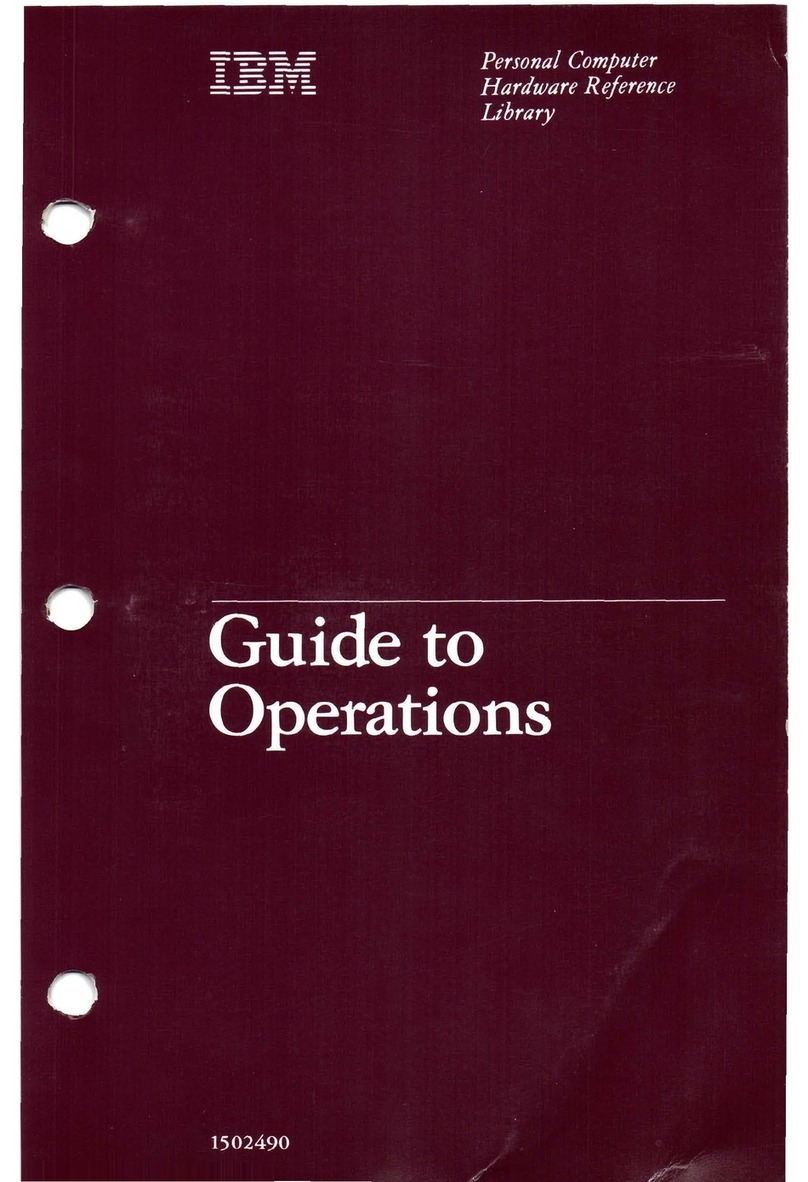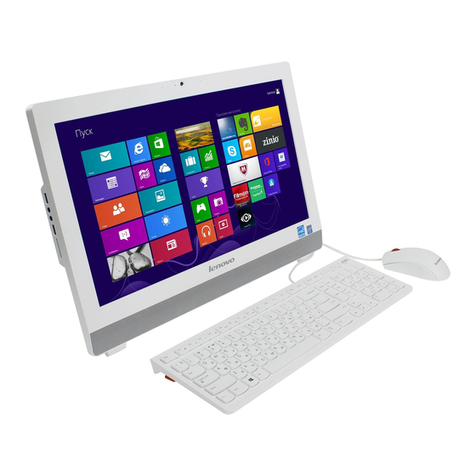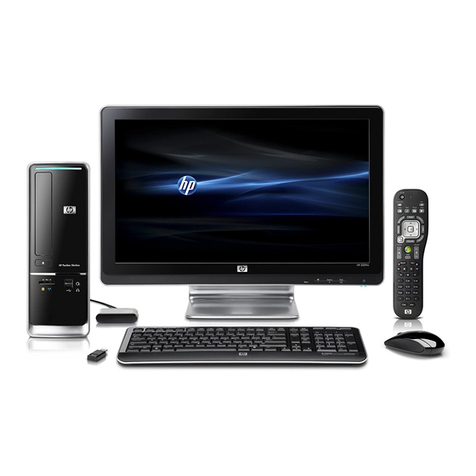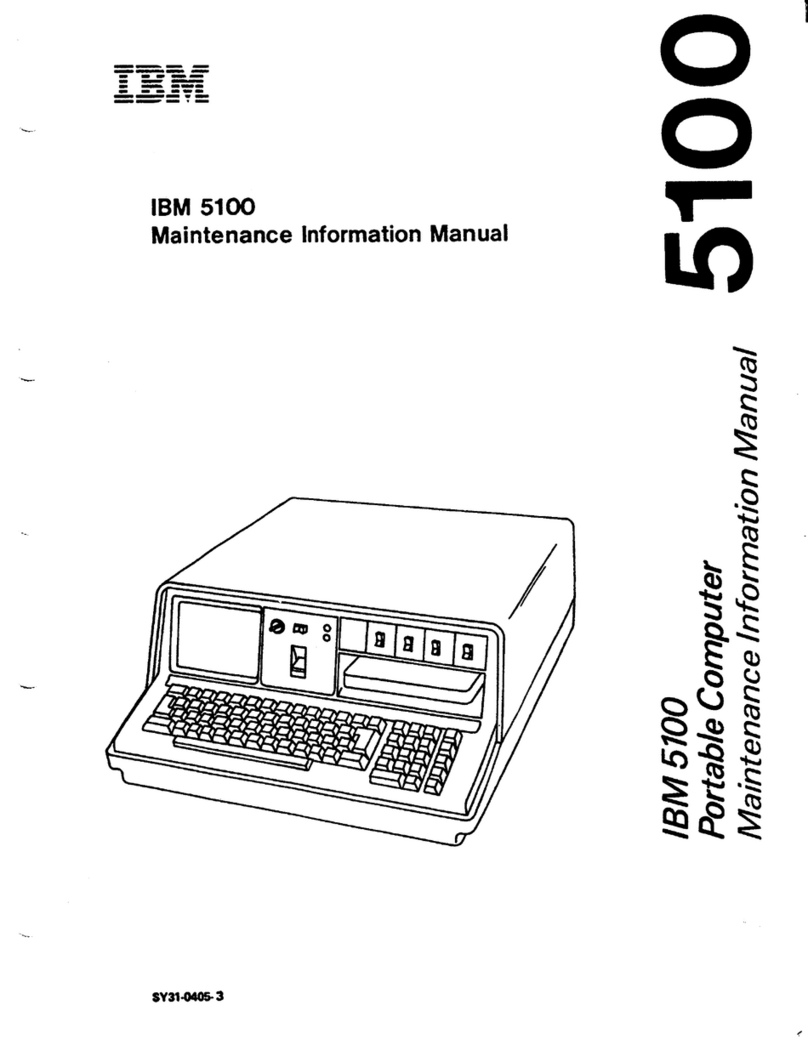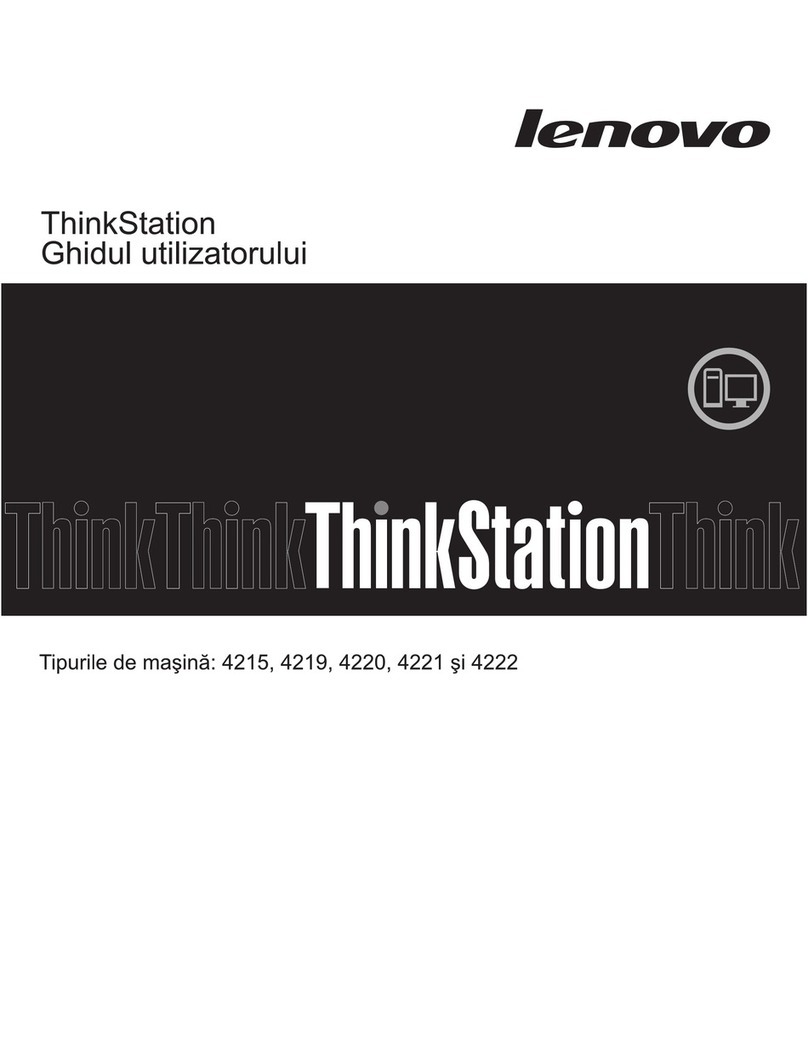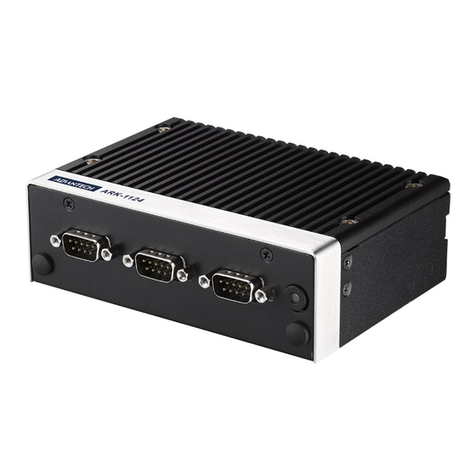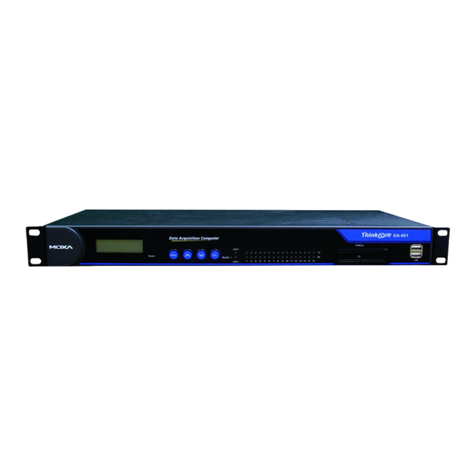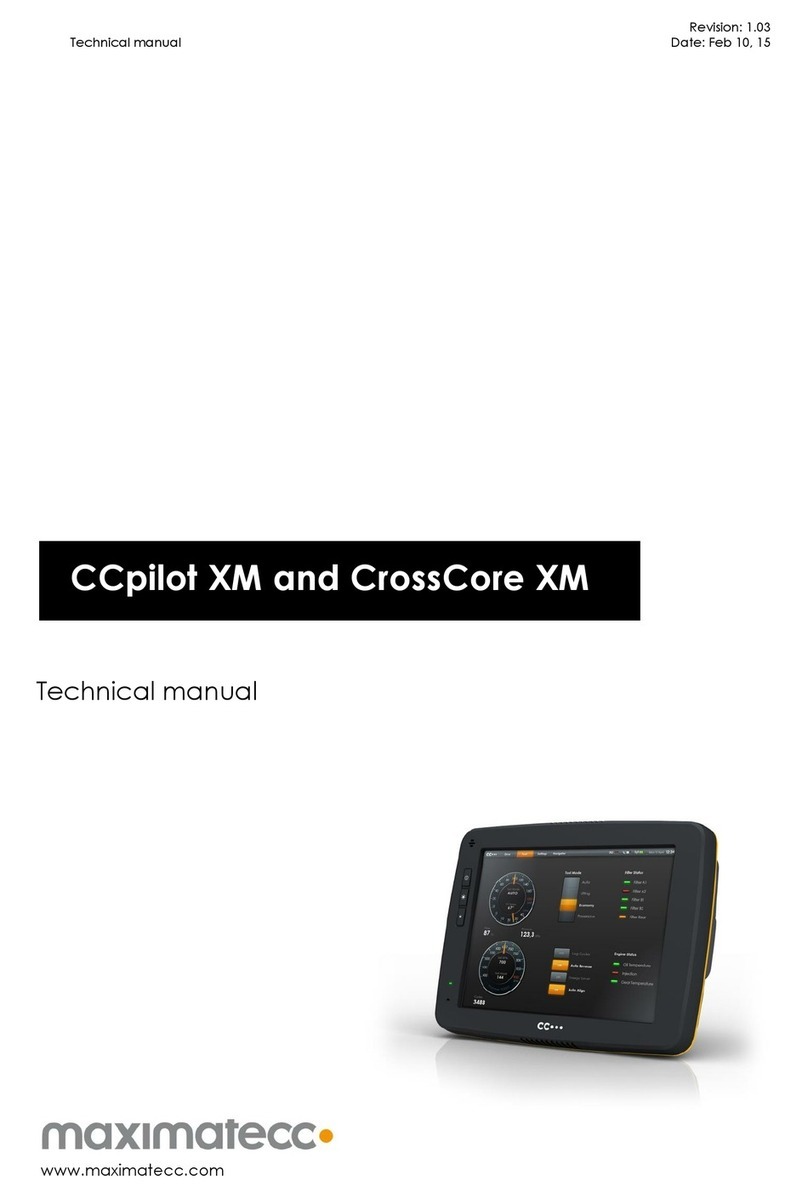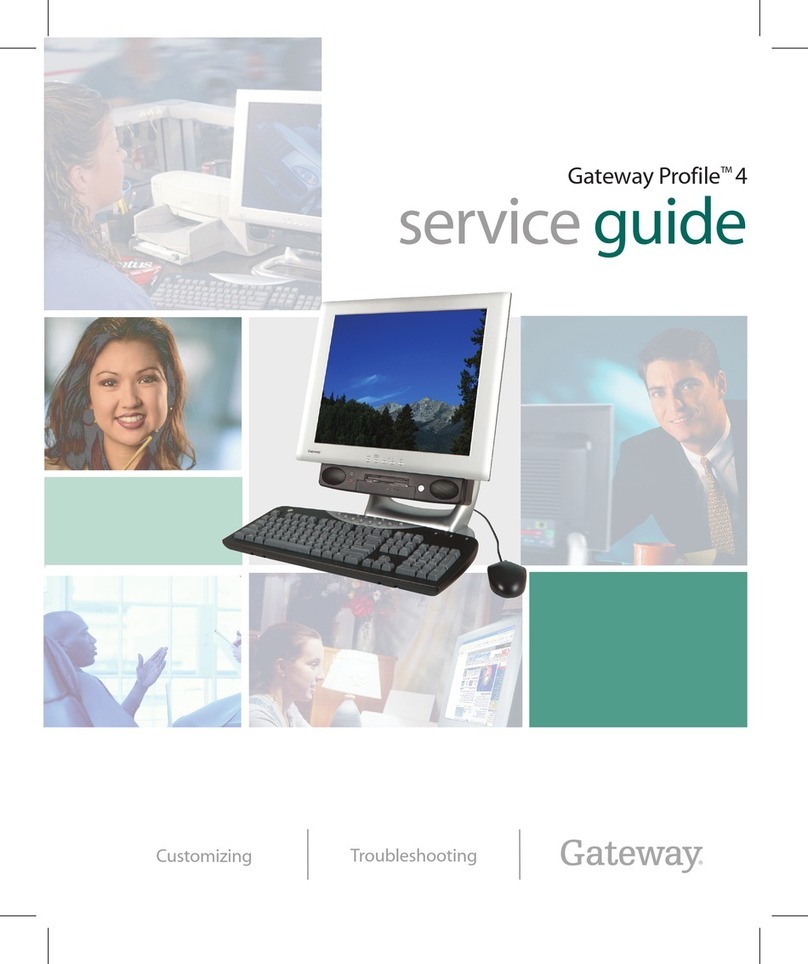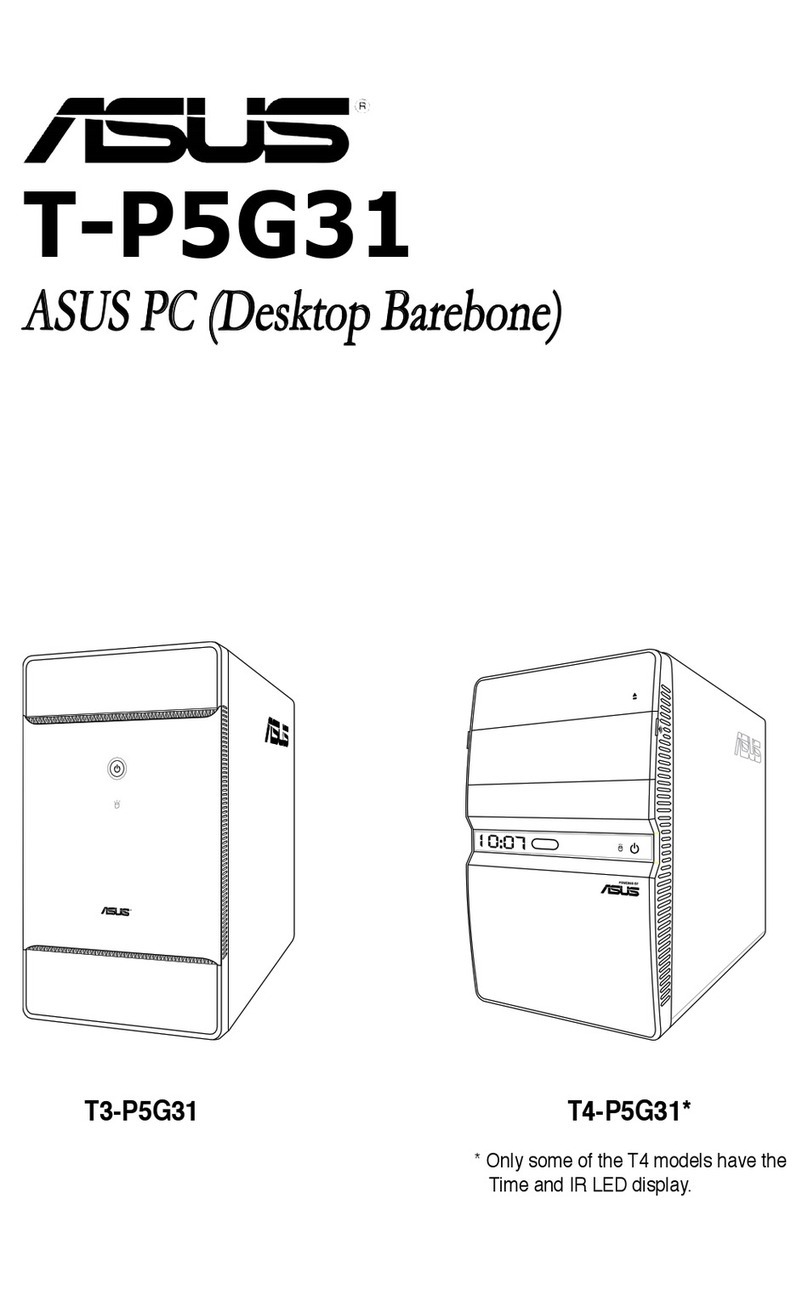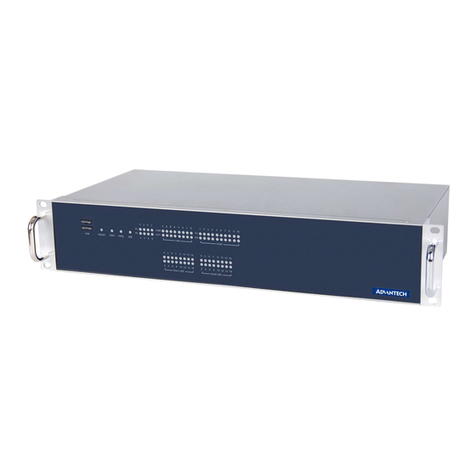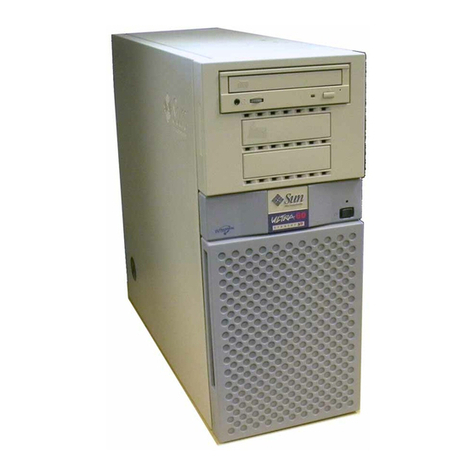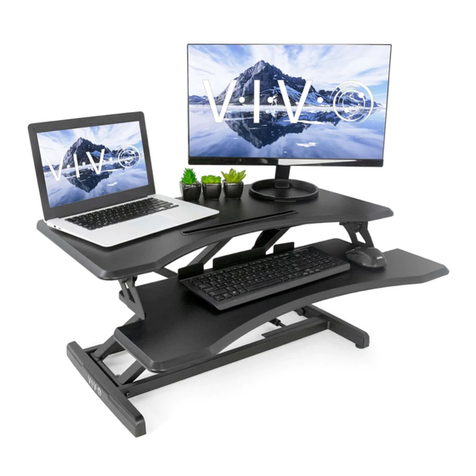Seco Udoo X86 User manual

UDOO X86
Next-gen Open hardware SBC with the N-series
Intel®Pentium®/ Celeron®and x5-Series Atom
SoCs

X86
UDOO X86 User Manual - Rev. First Edition: 1.0 - Last Edition: 1.0 - Author: S.B. - Reviewed by M.B. Copyright © 2017 SECO S.r.l.
2
All rights reserved. All information contained in this manual is proprietary and confidential material of SECO S.r.l.
Unauthorized use, duplication, modification or disclosure of the information to a third-party by any means without prior consent of SECO S.r.l. is prohibited.
Every effort has been made to ensure the accuracy of this manual. However, SECO S.r.l. accepts no responsibility for any inaccuracies, errors or omissions herein.
SECO S.r.l. reserves the right to change precise specifications without prior notice to supply the best product possible.
Some of the information found in the BIOS SETUP Chapter has been extracted from the following copyrighted Insyde Software Corp. documents:
InsydeH2O Setup Utility - User Reference Guide
The above mentioned documents are copyright © 2008 Insyde Software Corp. All rights reserved.
For further information on this module or other SECO products, but also to get the required assistance for any and possible issues, please contact us using the
dedicated web form available at http://www.seco.com (registration required).
Our team is ready to assist.
Revision
Date
Note
Ref
1.0
30th March 2017
First Official Release.
SB
REVISION HISTORY

X86
UDOO X86 User Manual - Rev. First Edition: 1.0 - Last Edition: 1.0 - Author: S.B. - Reviewed by M.B. Copyright © 2017 SECO S.r.l.
3
INDEX
INTRODUCTION.......................................................................................................................................................................... 5Chapter 1.
1.1 Warranty........................................................................................................................................................................................................................................ 6
1.2 Information and assistance............................................................................................................................................................................................................. 7
1.3 RMA number request.....................................................................................................................................................................................................................7
1.4 Safety............................................................................................................................................................................................................................................8
1.5 Electrostatic discharges ................................................................................................................................................................................................................. 8
1.6 RoHS compliance.......................................................................................................................................................................................................................... 8
1.7 Terminology and definitions............................................................................................................................................................................................................9
1.8 Reference specifications ..............................................................................................................................................................................................................11
OVERVIEW ............................................................................................................................................................................... 12Chapter 2.
2.1 Introduction..................................................................................................................................................................................................................................13
2.2 Technical specifications ...............................................................................................................................................................................................................14
2.3 Electrical specifications ................................................................................................................................................................................................................15
2.3.1 RTC Battery ................................................................................................................................................................................................................................................15
2.3.2 Power consumption.....................................................................................................................................................................................................................................16
2.3.3 Power rails naming convention .....................................................................................................................................................................................................................17
2.4 Mechanical specifications.............................................................................................................................................................................................................18
2.5 Block diagram.............................................................................................................................................................................................................................. 19
CONNECTORS......................................................................................................................................................................... 20Chapter 3.
3.1 Introduction..................................................................................................................................................................................................................................21
3.2 Connectors overview ...................................................................................................................................................................................................................22
3.3 Connectors description................................................................................................................................................................................................................ 23
3.3.1 Ethernet connector......................................................................................................................................................................................................................................23
3.3.2 USB ports...................................................................................................................................................................................................................................................24
3.3.3 HDMI connector..........................................................................................................................................................................................................................................26
3.3.4 miniDP++ Connectors .................................................................................................................................................................................................................................27
3.3.5 Audio interfaces...........................................................................................................................................................................................................................................28
3.3.6 Buttons / LED header ..................................................................................................................................................................................................................................29
3.3.7 μSD slot .....................................................................................................................................................................................................................................................30
3.3.8 S-ATA connectors.......................................................................................................................................................................................................................................30
3.3.9 M.2 SATA/PCI-e Slot: Socket 2 Key B type 3042/2260 ................................................................................................................................................................................31
3.3.10 M.2 Connectivity Slot: Socket 1 Key E Type 2230.........................................................................................................................................................................................32
3.3.11 FAN connector............................................................................................................................................................................................................................................33

X86
UDOO X86 User Manual - Rev. First Edition: 1.0 - Last Edition: 1.0 - Author: S.B. - Reviewed by M.B. Copyright © 2017 SECO S.r.l.
4
3.3.12 UDOO Bricks connector ..............................................................................................................................................................................................................................34
3.3.13 SPI Header..................................................................................................................................................................................................................................................34
3.3.14 ARDUINO interface + expansion connectors.................................................................................................................................................................................................34
3.3.15 IR Receiver..................................................................................................................................................................................................................................................37
BIOS SETUP............................................................................................................................................................................. 38Chapter 4.
4.1 InsydeH2O setup Utility................................................................................................................................................................................................................ 39
4.2 Main setup menu.........................................................................................................................................................................................................................40
4.2.1 System Time / System Date.........................................................................................................................................................................................................................40
4.3 Advanced menu ..........................................................................................................................................................................................................................41
4.3.1 Boot configuration submenu.........................................................................................................................................................................................................................41
4.3.2 Security configuration (TXE) submenu...........................................................................................................................................................................................................41
4.3.3 Video configuration submenu.......................................................................................................................................................................................................................42
4.3.4 Chipset configuration submenu....................................................................................................................................................................................................................43
4.3.5 ACPI Table/features submenu......................................................................................................................................................................................................................46
4.3.6 SATA configuration submenu.......................................................................................................................................................................................................................46
4.3.7 Console Redirection submenu .....................................................................................................................................................................................................................47
4.3.8 POST Hot Key submenu..............................................................................................................................................................................................................................49
4.3.9 Other configuration submenu .......................................................................................................................................................................................................................49
4.4 Security menu..............................................................................................................................................................................................................................50
4.5 Power menu................................................................................................................................................................................................................................51
4.5.1 Advanced CPU control submenu .................................................................................................................................................................................................................53
4.5.2 EC Watchdog Configuration submenu..........................................................................................................................................................................................................54
4.5.3 Thermal Zone configuration submenu...........................................................................................................................................................................................................54
4.6 Boot menu .................................................................................................................................................................................................................................. 55
4.6.1 Legacy submenu.........................................................................................................................................................................................................................................57
4.7 Exit menu ....................................................................................................................................................................................................................................58
APPENDICES............................................................................................................................................................................ 59Chapter 5.
5.1 Accessories................................................................................................................................................................................................................................. 60
5.1.1 M.2 Dual network modules ..........................................................................................................................................................................................................................60

X86
UDOO X86 User Manual - Rev. First Edition: 1.0 - Last Edition: 1.0 - Author: S.B. - Reviewed by M.B. Copyright © 2017 SECO S.r.l.
5
Chapter 1.
Warranty
Information and assistance
RMA number request
Safety
Electrostatic discharges
RoHS compliance
Terminology and definitions
Reference specifications

X86
UDOO X86 User Manual - Rev. First Edition: 1.0 - Last Edition: 1.0 - Author: S.B. - Reviewed by M.B. Copyright © 2017 SECO S.r.l.
6
1.1Warranty
This product is subject to the Italian Law Decree 24/2002, acting European Directive 1999/44/CE on matters of sale and warranties to consumers.
The warranty on this product lasts for 1 year.
Under the warranty period, the Supplier guarantees the buyer assistance and service for repairing, replacing or credit of the item, at the Supplier’s own discretion.
Shipping costs that apply to non-conforming items or items that need replacement are to be paid by the customer.
Items cannot be returned unless previously authorized by the supplier.
The authorization is released after completing the specific form available on the web-site http://www.udoo.org/customer-care/ (Open a New Ticket Return
Merchandise Application). The RMA authorization number must be put both on the packaging and on the documents shipped with the items, which must include
all the accessories in their original packaging, with no signs of damage to, or tampering with, any returned item.
The error analysis form identifying the fault type must be completed by the customer and has must accompany the returned item.
If any of the above mentioned requirements for the RMA is not satisfied, the item will be shipped back and the customer will have to pay any and all shipping costs.
Following a technical analysis, the supplier will verify if all the requirements, for which a warranty service applies, are met. If the warranty cannot be applied, the
Supplier will calculate the minimum cost of this initial analysis on the item and the repair costs. Costs for replaced components will be calculated separately.
Warning!
All changes or modifications to the equipment not explicitly approved by SECO S.r.l. could impair the equipment’
s functionalities and could void
the warranty

X86
UDOO X86 User Manual - Rev. First Edition: 1.0 - Last Edition: 1.0 - Author: S.B. - Reviewed by M.B. Copyright © 2017 SECO S.r.l.
7
1.2Information and assistance
What do I have to do if I’m experiencing problems with my product?
The following services are available:
UDOO website: visit http://www.udoo.org to receive the latest information on the product. In most cases it is possible to find useful information to solve the
problem.
UDOO Forum: join to the community of UDOO users. In the forum, available at http://www.udoo.org/forum/, it is possible to search the multiple topics of
the community, and look for other users that had the same kind of problem - and how they solved it. It is also possible to post new topics to ask for
specific help.
Repair centre: it is possible to send the faulty product to the SECO Repair Centre. In this case, follow this procedure:
oReturned items must be accompanied by a RMA Number. Items sent without the RMA number will be not accepted.
oReturned items must be shipped in an appropriate package. SECO is not responsible for damages caused by accidental drop, improper usage, or
customer neglect.
Note: Please have the following information before asking for technical assistance:
Name and serial number of the product;
Description of Customer’s peripheral connections;
Description of Customer’s software (operating system, version, application software, etc.);
A complete description of the problem;
The exact words of every kind of error message encountered.
1.3RMA number request
To request a RMA number, please visit UDOO web-site. On the bottom of the page, please select “Customer Care”, click on the “Open a New ticket”button and.
A RMA Number will be sent within 1 working day (only for on-line RMA requests).

X86
UDOO X86 User Manual - Rev. First Edition: 1.0 - Last Edition: 1.0 - Author: S.B. - Reviewed by M.B. Copyright © 2017 SECO S.r.l.
8
Always switch the power off, and unplug the power supply unit, before handling the board and/or connecting cables or other
boards.
Avoid using metallic components - like paper clips, screws and similar - near the board when connected to a power supply, to avoid
short circuits due to unwanted contacts with other board components.
If the board has become wet, never connect it to any external power supply unit or battery.
Check carefully that all cables are correctly connected and that they are not damaged.
Whenever handling a UDOO x86 board, ground yourself through an anti-static wrist strap. Placement of the board on an anti-static
surface is also highly recommended.
1.4Safety
The UDOO x86 board uses only extremely-low voltages.
While handling the board, please use extreme caution to avoid any kind of risk or damages to electronic components.
1.5 Electrostatic discharges
The UDOO x86 board, like any other electronic product, is an electrostatic sensitive device: high voltages caused by static electricity could damage some or all the
devices and/or components on-board.
1.6RoHS compliance
The UDOO x86 board is designed using RoHS compliant components and is manufactured on a lead-free production line. It is therefore fully RoHS compliant.

X86
UDOO X86 User Manual - Rev. First Edition: 1.0 - Last Edition: 1.0 - Author: S.B. - Reviewed by M.B. Copyright © 2017 SECO S.r.l.
9
1.7 Terminology and definitions
ACPI Advanced Configuration and Power Interface, an open industrial standard for the board’s devices configuration and power management
AHCI Advanced Host Controller Interface, a standard which defines the operation modes of SATA interface
API Application Program Interface, a set of commands and functions that can be used by programmers for writing software for specific Operating
Systems
BIOS Basic Input / Output System, the Firmware Interface that initializes the board before the OS starts loading
CEC Consumer Electronics Control, an HDMI feature which allows controlling more devices connected together by using only one remote control
DDC Display Data Channel, a kind of I2C interface for digital communication between displays and graphics processing units (GPU)
DDR Double Data Rate, a typology of memory devices which transfer data both on the rising and on the falling edge of the clock
DDR3L DDR, 3rd generation, Low voltage
DP++ Multimode Display Port, a video interface which can support both Display Port displays (directly) and HDMI/DVI displays (by using and external
adapter)
GBE Gigabit Ethernet
Gbps Gigabits per second
GND Ground
GPI/O General purpose Input/Output
HD Audio High Definition Audio, most recent standard for hardware codecs developed by Intel®in 2004 for higher audio quality
HDMI High Definition Multimedia Interface, a digital audio and video interface
I2C Bus Inter-Integrated Circuit Bus, a simple serial bus consisting only of data and clock line, with multi-master capability
IoT Internet of Things
M.2 recent specifications for internal expansion modules, which defines many pinouts and sizes for different purposes. Can include SATA, PCI
Express, USB, UART, DP interfaces
Mbps Megabits per second
MMC/eMMC MultiMedia Card / embedded MMC, a type of memory card, having the same interface as the SD card. The eMMC is the embedded version of
the MMC. They are devices that incorporate the flash memories on a single BGA chip.
N.A. Not Applicable
N.C. Not Connected
OpenCL Open Computing Language, a software library based on C99 programming language, conceived explicitly to realise parallel computing using
Graphics Processing Units (GPU)
OpenGL Open Graphics Library, an Open Source API dedicated to 2D and 3D graphics

X86
UDOO X86 User Manual - Rev. First Edition: 1.0 - Last Edition: 1.0 - Author: S.B. - Reviewed by M.B. Copyright © 2017 SECO S.r.l.
10
OS Operating System
PCI-e Peripheral Component Interface Express
PSU Power Supply Unit
PWM Pulse Width Modulation
PWR Power
PXE Preboot Execution Environment, a way to perform the boot from the network ignoring local data storage devices and/or the installed OS
S-ATA Serial Advance Technology Attachment, a differential full duplex serial interface for Hard Disks
SD Secure Digital, a memory card type
SM Bus System Management Bus, a subset of the I2C bus dedicated to communication with devices for system management, like a smart battery and
other power supply-related devices
SPI Serial Peripheral Interface, a 4-Wire synchronous full-duplex serial interface which is composed of a master and one or more slaves, individually
enabled through a Chip Select line
TBM To be measured
TDP Thermal Design Power, an indication of the amount of heat generated by the processor that must be used for the design of the thermal solution.
TMDS Transition-Minimized Differential Signaling, a method for transmitting high speed serial data, normally used on DVI and HDMI interfaces
UEFI Unified Extensible Firmware Interface, a specification defining the interface between the OS and the board’s firmware. It is meant to replace the
original BIOS interface
USB Universal Serial Bus
V_REF Voltage reference Pin
xHCI eXtensible Host Controller Interface, Host controller for USB 3.0 ports, which can also manage USB 2.0 and USB1.1 ports

X86
UDOO X86 User Manual - Rev. First Edition: 1.0 - Last Edition: 1.0 - Author: S.B. - Reviewed by M.B. Copyright © 2017 SECO S.r.l.
11
1.8 Reference specifications
Here below it is a list of applicable industry specifications and reference documents.
Reference
Link
ACPI
http://www.acpi.info
AHCI
http://www.intel.com/content/www/us/en/io/serial-ata/ahci.html
DDC
http://www.vesa.org
Gigabit Ethernet
http://standards.ieee.org/about/get/802/802.3.html
HD Audio
http://www.intel.com/content/dam/www/public/us/en/documents/product-specifications/high-definition-audio-specification.pdf
HDMI
http://www.hdmi.org/index.aspx
I2C
http://www.nxp.com/documents/other/UM10204_v5.pdf
Intel®Front Panel I/O connectivity DG
http://www.formfactors.org/developer/specs/A2928604-005.pdf
M.2
http://pcisig.com/specifications
MMC/eMMC
http://www.jedec.org/committees/jc-649
OpenCL
http://www.khronos.org/opencl
OpenGL
http://www.opengl.org
PCI Express
http://www.pcisig.com/specifications/pciexpress
SATA
https://www.sata-io.org
SD Card Association
https://www.sdcard.org/home
SM Bus
http://www.smbus.org/specs
TMDS
http://www.siliconimage.com/technologies/tmds
UEFI
http://www.uefi.org
USB 2.0 and USB OTG
http://www.usb.org/developers/docs/usb_20_070113.zip
USB 3.0
http://www.usb.org/developers/docs/usb_30_spec_070113.zip
Intel®N-Series Pentium®/ Celeron®and
x5-Series Atom family
http://ark.intel.com/products/codename/66094/Braswell#@Embedded

X86
UDOO X86 User Manual - Rev. First Edition: 1.0 - Last Edition: 1.0 - Author: S.B. - Reviewed by M.B. Copyright © 2017 SECO S.r.l.
12
Chapter 2.
Introduction
Technical specifications
Electrical specifications
Mechanical specifications
Block diagram

X86
UDOO X86 User Manual - Rev. First Edition: 1.0 - Last Edition: 1.0 - Author: S.B. - Reviewed by M.B. Copyright © 2017 SECO S.r.l.
13
2.1Introduction
UDOO-x86 is a board designed specifically for maker’s / DIY market, embedding both a System-on-Chips (SoC) of the Intel®family of embedded SoCs formerly
coded as Braswell, and an Arduino 101-compatible platform.
This board represents a junction point between the PC world, represented by the Braswell SoCs, and the Arduino 101 World, implemented on-board using an
Intel®Curie microcontroller (the same used, indeed, in Arduino 101 boards).
All the SoCs mounted on UDOO x86 are Quad-Core, ranging from 2.00GHz up to 2.56 GHz, with 64-bit instruction set and very low TDP. This single chip solution
includes the memory controller, which gives support for up to 8GB of DDR3L memory directly soldered on-board.
All SoCs embed an Intel®HD Graphics controller, with up to 16 Execution units, which offers high graphical performances, with support for Microsoft®DirectX11.1,
OpenGL 4.2, OpenCL 1.2, OpenGL ES 3.0 and HW acceleration for video decoding of HEVC, H.264, MPEG2, MVC, VC-1, WMV9, JPEG/MJPEG and VP8 video
standards (for H.264, MVC and JPEG/MJPEG also HW encoding is offered). This embedded GPU is able to drive three independent displays, by using the HDMI
and the two miniDP++. Any combinations of these video interfaces are supported.
Other features offered by the N-Series Intel®Pentium®/ Celeron®and x5-Series Atom family of SoCs, and included in UDOO x86 board, are two SATA Channels
(one used for the common SATA / SSD drives, the other used to implement a M.2 Socket 2 Key B SSD slot), microSD interface, four USB ports (three USB 3.0 on
standard Type-A sockets, one USB 2.0 on M.2 Socket 1 Key E Connectivity slot and another USB 2.0 port used for the communications with the Intel®Curie
microcontroller), HD Audio and four PCI Express lanes (a PCI express lane is used for the implementation of the Gigabit Ethernet interface, two lanes are carried out
on M.2 Socket 2 Key B SSD slot, the remaining is available on M.2 Socket 1 Key E Connectivity Slot)
Through the Intel®Braswell SoC’s USB interface #3 pass all the communications with the Intel®Curie microcontroller, which implements the Arduino 101
interface: this situation reproduces exactly the situation of an external Arduino board connected to an x86 PC, with the advantages given by an integrated board
solution.
The Intel®Curie microcontroller, however, not only implements the Arduino 101 interface, but also offers an embedded Bluetooth Low Energy interface (with on-
board antenna) and 6-axis combo sensor with accelerometer and gyroscope.
All these features, combined together, make UDOO x86 the most powerful maker board ever.
Please refer to following chapter for a complete list of all the integrated peripherals and the characteristics.

2.2Technical specifications
SoC
Intel®Pentium®N3710, Quad Core @1.6GHz (Turbo Boost 2.56GHz), 2MB
Cache, 6W TDP
Intel®Celeron®N3160, Quad Core @1.6GHz (Turbo Boost 2.24GHz), 2MB
Cache, 6W TDP
Intel®Atom x5-E8000, Quad Core @1.04GHz, 2MB Cache, 5W TDP
Memory
Up to 8GB Dual Channel DDR3L Memory soldered on-board*
Graphics
Integrated Intel®HD Graphics controller
Three independent display support
HW decoding of HEVC(H.265), H.264, MPEG2, MVC, VC-1, VP8, WMV9,
JPEG/MJPEG formats
HW encoding of H.264, MVC and JPEG/MPEG formats
Video Interfaces
HDMI connector
2 x miniDP++ connectors
Video Resolution
Up to 3840 x 2160 24bpp @ 30Hz, 2560 x 1600 24bpp @60Hz
Mass Storage
Optional 32GB eMMC drive onboard
SATA 7p M connector
M.2 Key B SSD slot (Type 2242 or 2260 modules accepted)
microSD Card slot
Networking
Realtek RTL811G Gigabit Ethernet controller
Gigabit Ethernet LAN interface
M.2 Key E Slot for optional Wireless modules
Embedded Bluetooth Low Energy module + antenna
* Please notice that total amount of 8GB would be usable only with 64-bit OS. Total
amount of memory available with a 32-bit OS depends on the OS itself (less than
4GB, however).
USB
3 x USB 3.0 Host ports on Type-A sockets
1 x USB 2.0 Host port on M.2 Key E slot
PCI-Express
1 x PCI-e x2 port on M.2 Key B SSD Slot
1 x PCI-e x1 port on M.2 Key E slot
Audio
HD Audio Codec Realtek ALC283
Combo TRSS connector with Mic In and Line out support
S/PDIF signal
2 x Speaker internal headers
Serial ports
2 x UART with Flow Control ports
Other Interfaces
Up to 20 extended GPIOs, multiplexed with other interfaces
LPC, 2x I2C, T/S signals, GPIOs on expansion connector
I2C UDOO bricks connector
SPI Connector
Switch/LED Front Panel Header
CIR (Consumer InfraRed) Sensor
Arduino 101 compatible shield
Integrated 6-axis combo sensor with accelerometer and gyroscope
Power supply: +12VDC ± 5%
RTC Coin cell Battery
Operating temperature: 0°C ÷ +60°C** (Commercial temperature)
Dimensions: 120 x 85 mm (4.72”x 3.35”).
Supported Operating Systems:
Microsoft®Windows 10, 8.1, 7
Any Linux distribution for x86 64-bit platform
Android
** Temperatures indicated are the maximum temperature that the
heatspreader / heatsink can reach in any of its parts. This means that it is
customer
’
s responsibility to use any passive cooling solution along with an
application-dependent cooling system, capable to ensure that the
heatspreader / heatsink temperature remains in the range above indicated.

CAUTION: handling batteries incorrectly or replacing with not-approved devices may present a risk of fire or explosion.
2.3Electrical specifications
The UDOO x86 board needs to be supplied only with an external 12VDC ± 5% power supply, minimum 40W for basic functionalities
recommended.
This voltage can be supplied through a standard 6.3mm (internal pin, diameter 2.0 mm) Power Jack (CN21). Internal pin is VIN power line.
2.3.1 RTC Battery
For the occurrences when the module is not powered with an external power supply, on board there is a cabled coin Lithium Battery to supply, with a 3V voltage,
the Real Time Clock embedded inside the Intel®SoC.
Battery used is a cabled CR2032-LD Lithium coin-cell battery, with a nominal capacity of 220mAh.
The battery is not rechargeable, and can be connected to the board using dedicated connector CN5 which is a 2-pin
p1.27 mm type MOLEX p/n 53398-0271 or equivalent, with pinout shown in the table on the left.
Mating connector: MOLEX 51021-0200 receptacle with MOLEX 50079-8000 female crimp terminals.
In case of exhaustion, the battery should only be replaced with devices of the same type. Always check the orientation before
inserting and make sure that they are aligned correctly and are not damaged or leaking.
Never allow the batteries to become short-circuited during handling.
Batteries supplied with UDOO x86 are compliant to requirements of European Directive 2006/66/EC regarding batteries and accumulators. When putting out of
order UDOO x86, remove the batteries from the board in order to collect and dispose them according to the requirement of the same European Directive above
mentioned. Even when replacing the batteries, the disposal has to be made according to these requirements.
Battery connector - CN1
Pin
Signal
1
VRTC
2
GND

X86
UDOO X86 User Manual - Rev. First Edition: 1.0 - Last Edition: 1.0 - Author: S.B. - Reviewed by M.B. Copyright © 2017 SECO S.r.l.
16
2.3.2 Power consumption
Using the following setup, and using all possible SoCs offered for UDOO x86 board, the current consumption (RMS) has been measured on the VIN Power line
when the board is supplied through DC power jack CN23 using a +12VDC Notebook DC Adapter.
O.S. Windows 10 Professional
32GB eMMC onboard
USB mouse and keyboard connected
HDMI display connected, resolution 1920x1080.
BIOS Release 1.01
Independently by the SoC mounted onboard, the following power consumptions are common to all boards:
Battery Backup power consumption: 5.7μA
Soft-Off State power consumption: 53.7mA
Suspend State power consumption: 59.8mA
Please consider that the power consumption depends strongly on the utilization scenario.
For this reasons, it is recommended to use PSU with a minimum power of 36W for basic functionalities
Status
SoC / Configuration
N3710
32GB eMMC
8GB RAM
N3160
32GB eMMC
4GB RAM
x5-E3800
32GB eMMC
2GB RAM
Inrush current at boot
920mA
748mA
542mA
Idle, power saving configuration
307mA
264mA
314mA
OS Boot, power saving configuration
454mA
342mA
316mA
Video reproduction@720p, power saving configuration
372mA
359mA
336mA
Video reproduction@1080p, power saving configuration
487mA
420mA
335mA
Internal Stress Test Tool, maximum performance
1008mA
1020mA
906mA

X86
UDOO X86 User Manual - Rev. First Edition: 1.0 - Last Edition: 1.0 - Author: S.B. - Reviewed by M.B. Copyright © 2017 SECO S.r.l.
17
2.3.3 Power rails naming convention
In all the tables contained in this manual, Power rails are named with the following meaning:
_S: Switched voltages, i.e. power rails that are active only when the board is in ACPI’s S0 (Working) state. Examples: +3.3V_S, +5V_S.
_A: Always-on voltages, i.e. power rails that are active both in ACPI’s S0 (Working), S3 (Standby) and S5 (Soft Off) state. Examples: +5V_A, +3.3V_A.
Other suffixes are used for application specific power rails, which are derived from same voltage value of voltage switched rails, if it is not differently stated (for
example, +5VHDMI is derived from +5V_S, and so on).

X86
UDOO X86 User Manual - Rev. First Edition: 1.0 - Last Edition: 1.0 - Author: S.B. - Reviewed by M.B. Copyright © 2017 SECO S.r.l.
18
2.4 Mechanical specifications
The board dimensions are 120 x 85 mm (4.72”x 35”).
The printed circuit of the board is made of ten layers, some of them are ground planes, for disturbance rejection.

X86
UDOO X86 User Manual - Rev. First Edition: 1.0 - Last Edition: 1.0 - Author: S.B. - Reviewed by M.B. Copyright © 2017 SECO S.r.l.
19
Intel®Braswell
family SOC
Power section
Soldered down
DDR3L System
Memory
Soldered down
DDR3L System
Memory
Buttons/LED
Header
JTAG connector
IR Receiver
FAN connector
HDMI connector
Realtek RTL8111G
Gigabit Ethernet
Controller
Gigabit Ethernet
connector
2 x USB 3.0
Type-A Socket
1 x USB 3.0
Type-A Socket
M.2 Key E slot
Speaker internal
headers
SATA connector
Coin Cell Cabled
Battery
Realtek ALC283
HD Audio Codec
STMicroelectronics
STM32
microcontroller
PCU SPI
BIOS Flash
Intel®Curie
PCI-e #3
USB #4
SM bus
CIR
CEC
HDMI
DP++
USB #0, #1
USB #2
HD Audio
SATA #2
RTC Well
Power Pushbutton
PCI-e #2
DDI #1 #2
DDI #0
Expansion
connector #1
2 x I2C + T/S MGMT
+ SD #2
2x UART with Flow
Control+ LPC
USB #3
Mic + Headphone
TRRS combo
2 x miniDP++
connectors
PWRBTN#, RSTBTN#, SATALED#
SATA #0
Internal Connector
Frontal Connector
Rear Connector
eMMC Drive
MMC
POWER
ANALOG IN
SPI Flash
Arduino 101 / Genuino 101 Shield
BT LE Antenna
BT
SPI
JTAG
HDD power
connector
μSD Card slot
SD #3
PWRBTN#
PCI-e #0 #1
M.2 Key B slot
I2C brick
connector
Expansion
connector #2
DIGITAL-PWM
SPI connector
2.5 Block diagram

X86
UDOO X86 User Manual - Rev. First Edition: 1.0 - Last Edition: 1.0 - Author: S.B. - Reviewed by M.B. Copyright © 2017 SECO S.r.l.
20
Chapter 3.
Introduction
Connectors overview
Connectors description
Table of contents

